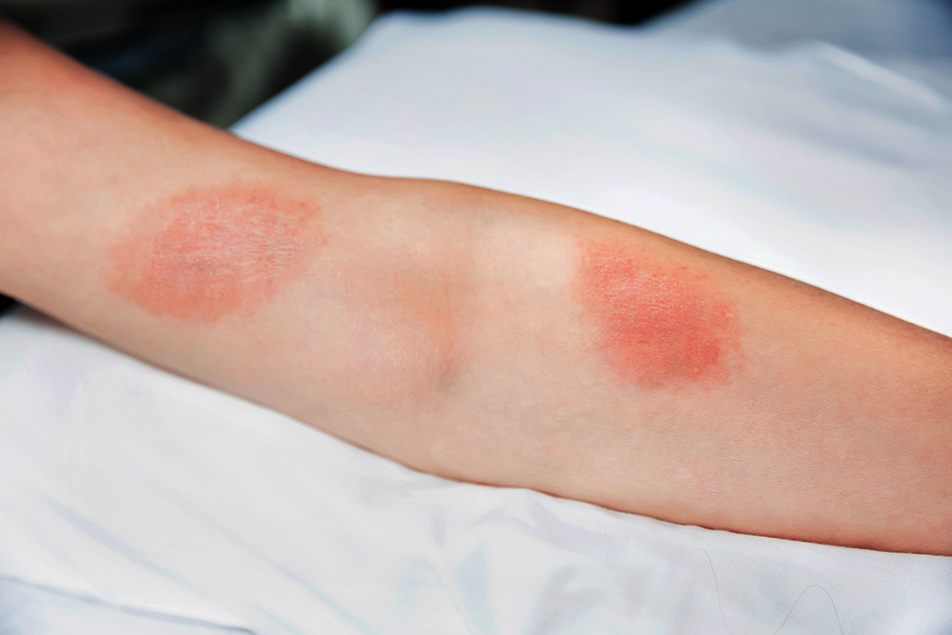
The skin, while accessible to all, is still an enigma to many physicians. In this post, board certified dermatologist Diana Westgate, MD, PPG – Dermatology, sheds some light on the distinguishing features among a few common summer rashes she sees in her dermatology clinic.
Poison Ivy
Poison ivy is just one example of a plant-induced dermatitis. It occurs when poison ivy vines or leaves brush against the skin, depositing the plant oil and inducing an allergic reaction. The rash usually presents in itchy red, patches that appear wet. Poison ivy can even cause true blisters with characteristic “lines” noted on examination. Lines are not made naturally by the body. When a dermatologist sees a line or a geometric shape, it’s a clue to look for an outside source.
Here are some tips for people who may be at risk for poison ivy exposure:
- Wear long sleeves and long pants
- Consider using a product like Ivy X, which is a pre-contact barrier solution
- After a possible exposure, wash the area with soap and water as soon as possible to get the oil off the skin
Poison ivy is not contagious and does not spread as a result of scratching, though it may appear to move around or come out in phases. The only risk of spread is while the oils are still on the skin. The phasic nature of the outbreak may occur because the areas with the greatest exposure break out first, and areas with lesser contact with the plant react later. Treatment depends on the severity, but may include topical and/or oral steroids.
Bug bites
Bug bites typically present as red swollen, itchy bumps that are grouped together, often in a triplet, known as the “breakfast, lunch and dinner sign”. Most bugs are opportunists and will bite exposed areas like the neck, face, arms and ankles, and will not burrow under the clothing. That said, they do prefer warm skin at the edges of clothing so bites can occur at the waistline or braline, as well.
Bed bugs are among the most feared culprits, since they are difficult to eradicate. So, how can you tell if you are being bitten in bed? Look for a few tell-tale signs: 1) waking with more bites than were present when you went to bed, 2) rusty red/brown stains on bed sheets, or 3) smelling a musty or sweet smell (which can be a sign of a well-established infestation). Your dermatologist can treat the bites themselves with a potent topical steroid, but the infestation will need to be managed to keep the bites from persisting.
Intertrigo
Intertrigo is a heat-related rash that occurs in body folds, under the arms, under breasts, under the belly or groin folds. This condition is attributed to sweating and friction, and is commonly mistaken for and treated as a yeast infection. Unlike a yeast infection, this rash is well defined and does not have satellite pustules.
The key to treatment is to decrease inflammation, sweating and friction. Contrary to what many think, a powder will not do the trick when the intertrigo is actively inflamed. I tell my patients powders prevent but a cream is needed for treatment. Intertrigo is treated with a low potency topical steroid (which may provoke yeast overgrowth), plus topical anti-yeast cream to prevent a secondary infection. Once improved, a powder can be applied to wick away moisture and reduce friction. A deodorant stick can also be applied to reduce sweating and friction and is best for preventing chaffing (such as between the thighs).
If you develop symptoms consistent with one of these rashes, visit your local dermatologist for an official diagnosis and treatment.



